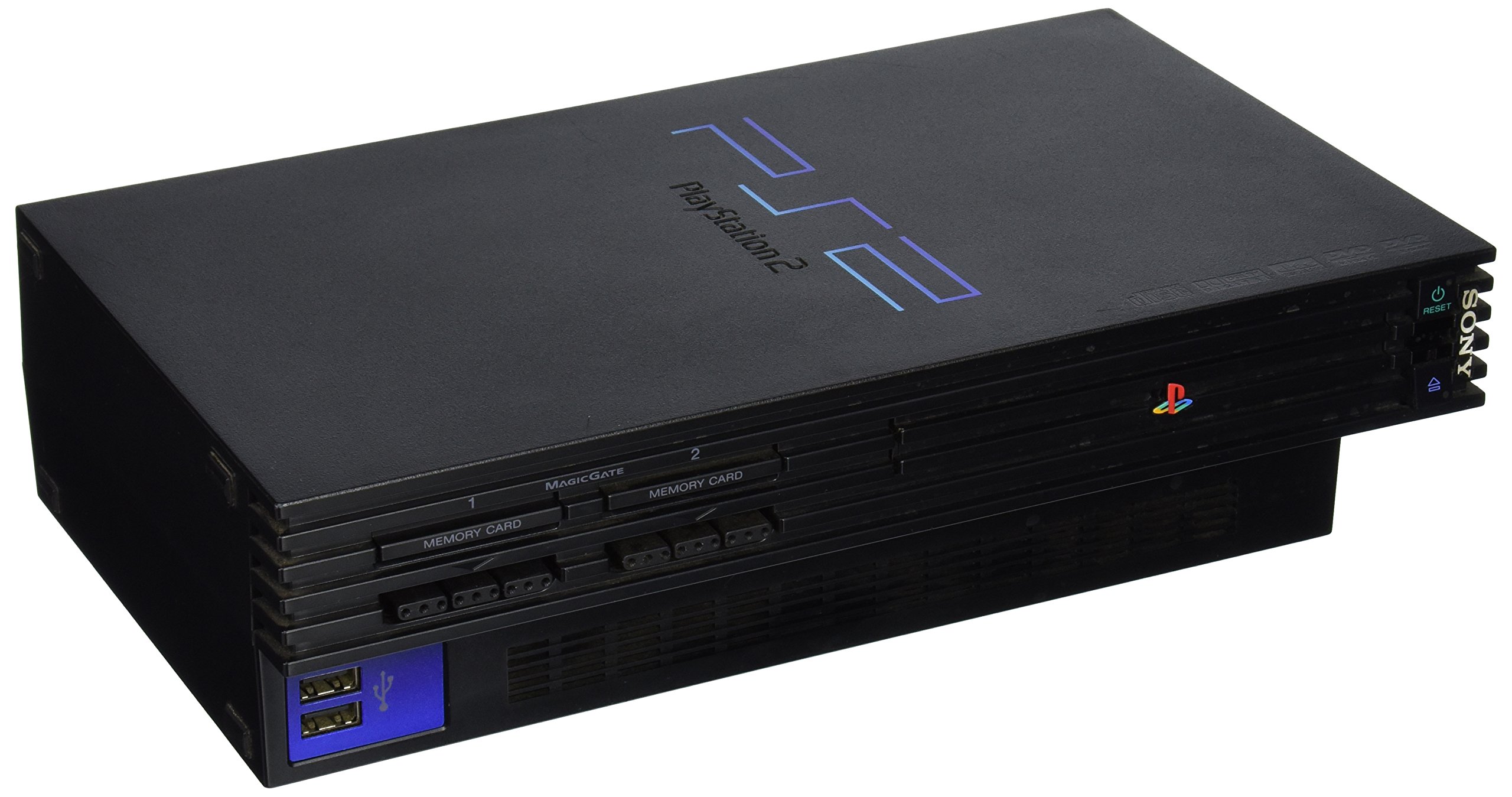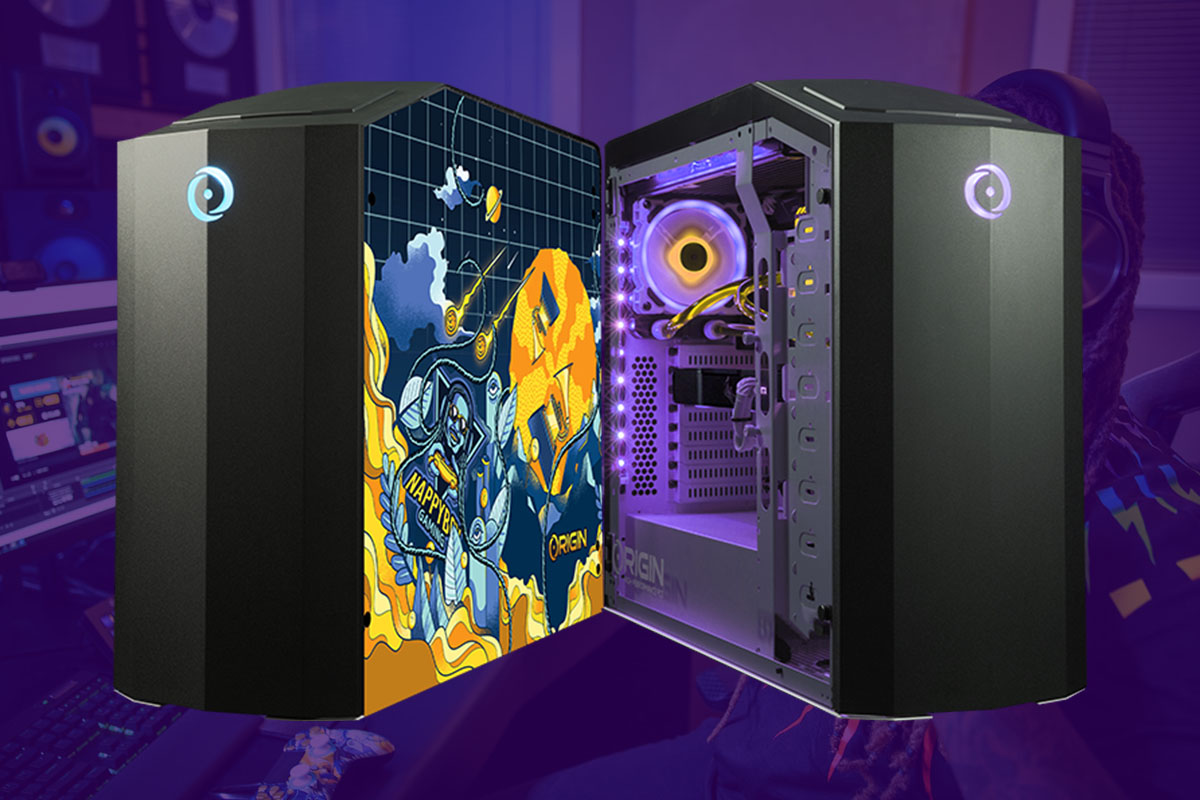Introduction
The online gaming industry has experienced explosive growth in recent years, becoming a multibillion-dollar global phenomenon. With the advent of advanced technology and widespread internet access, people from all walks of life now have the opportunity to engage in immersive and interactive gaming experiences. This has led to a significant increase in competition among online gaming companies, as they vie for the attention and loyalty of customers.
As the online gaming market becomes more saturated, it is essential for companies to understand the dynamics of customer bargaining power. The bargaining power of customers refers to the influence and control that customers have over the pricing, offerings, and overall experience provided by online gaming companies. Understanding this power is crucial for companies to develop effective strategies that address customer needs and maintain a competitive edge in the industry.
In this article, we will explore the concept of customer bargaining power in the online gaming industry. We will delve into the factors that influence this power, including competitive intensity, customer preferences, availability of alternative gaming options, price sensitivity, customer loyalty, and the impact of customer reviews and ratings. Additionally, we will discuss the importance of customer relationship management in building and maintaining strong relationships with customers.
Finally, we will provide strategies that online gaming companies can adopt to address and mitigate the bargaining power of customers, ultimately ensuring their continued success and growth in the industry.
Overview of the Online Gaming Industry
The online gaming industry has transformed the way people around the world engage in gaming activities. It encompasses a wide range of games, from casual and mobile games to massively multiplayer online role-playing games (MMORPGs) and e-sports competitions. This industry has experienced remarkable growth, driven by technological advancements, increased accessibility to high-speed internet, and the widespread adoption of smartphones and other devices.
One of the key advantages of online gaming is its ability to connect players from different geographical locations, allowing them to interact and compete in real-time. This has fostered a sense of community and social engagement among gamers, creating a thriving ecosystem within the online gaming world.
The industry is comprised of various segments, including mobile gaming, console gaming, and computer gaming. Mobile gaming, in particular, has become increasingly popular due to the convenience and portability of smartphones. With millions of gaming apps available for download, users have a vast selection of games to choose from, catering to different genres and interests.
Console gaming, on the other hand, offers a more immersive and high-definition gaming experience. Companies such as Sony, Microsoft, and Nintendo release gaming consoles with powerful hardware and graphics capabilities, attracting dedicated gamers who seek superior gaming performance.
Computer gaming remains a prominent segment in the industry, with a focus on desktop gaming PCs and gaming laptops. PC gaming offers a vast range of games, including both mainstream and indie titles, and provides users with the ability to customize their gaming experience by upgrading hardware components.
The online gaming industry has also seen the rise of e-sports, which involves professional gamers competing in organized tournaments and leagues. E-sports has gained significant popularity, with large-scale events attracting millions of viewers and offering substantial prize pools. This sector has created opportunities for professional gamers, game streamers, and content creators to build careers around their passion for gaming.
Furthermore, the online gaming industry has witnessed a shift towards freemium models. Many games are initially offered for free but include in-game purchases and microtransactions, where players can spend real money to unlock additional content, enhance their gameplay experience, or acquire virtual items.
Overall, the online gaming industry continues to evolve and expand, fueled by technological advancements, increasing consumer demand, and the continuous development of innovative gaming experiences. As this industry grows, it becomes essential for companies to navigate the complex landscape and understand the factors that influence customer bargaining power.
Definition and Concept of Bargaining Power of Customers
The bargaining power of customers, also known as buyer power, refers to the ability of customers to influence the terms and conditions of a transaction in a business relationship. In the context of the online gaming industry, customer bargaining power relates to customers’ ability to demand favorable pricing, features, quality, and overall value from gaming companies.
Understanding customer bargaining power is crucial for online gaming companies as it determines the level of control and influence that customers have over the industry. It helps companies assess the competitive landscape, anticipate customer demands, and devise effective strategies to attract and retain customers.
Several factors contribute to the bargaining power of customers in the online gaming industry. One critical factor is the competitive intensity within the market. The presence of numerous online gaming companies vying for customers’ attention and engagement gives customers more options to choose from, increasing their bargaining power. Companies must differentiate themselves and provide unique value propositions to stand out from the competition.
Another factor influencing customer bargaining power is customer preferences and demands. As the industry evolves, customer expectations continue to evolve as well. Online gaming companies must closely monitor and analyze customer preferences to tailor their offerings and experiences accordingly. The ability to meet and exceed customer expectations is key to maintaining a competitive advantage and reducing customer bargaining power.
The availability of alternative gaming options also affects customer bargaining power. With the vast array of games and platforms available today, customers have the ability to switch between different gaming options easily. This provides them with leverage to demand better pricing, features, and experiences from online gaming companies.
Price sensitivity is yet another factor that shapes customer bargaining power. Online gaming customers are typically price-conscious and compare prices across different platforms. If a company’s pricing strategy is not competitive or does not offer sufficient value for the price, customers may be more inclined to switch to a more affordable alternative, reducing the company’s bargaining power.
Customer loyalty and switching costs also play a critical role in customer bargaining power. Companies that have successfully built loyal customer bases and have high switching costs, such as the loss of progress or achievements, can exert more control over pricing and offerings. Loyalty programs, personalized experiences, and robust customer relationship management can help companies strengthen customer loyalty and mitigate customer bargaining power.
Additionally, the impact of customer reviews and ratings cannot be underestimated in today’s digital age. Customers rely heavily on online reviews and ratings to make decisions about which games to play and which companies to support. Negative reviews can significantly impact a company’s reputation and customer perception, thereby increasing customer bargaining power. Companies must actively manage and respond to customer feedback to maintain a positive image and minimize customer bargaining power.
Overall, understanding and managing customer bargaining power is a critical aspect of success in the online gaming industry. By recognizing the factors that influence customer power and adopting strategic approaches to address their demands, companies can establish a stronger position in the market and drive sustainable growth.
Factors Influencing the Bargaining Power of Customers in the Online Gaming Industry
The bargaining power of customers in the online gaming industry is influenced by several key factors. These factors play a crucial role in shaping customers’ ability to demand favorable terms, pricing, and overall value from gaming companies. By understanding these factors, companies can devise effective strategies to address customer demands and maintain a competitive edge in the industry.
1. Competitive Intensity: The level of competition in the online gaming industry significantly impacts customer bargaining power. When there are numerous gaming companies offering similar products or services, customers have more options to choose from. This increased competition gives customers greater influence over pricing, features, and overall value. To counterbalance this, gaming companies must differentiate themselves through unique offerings and superior customer experiences.
2. Customer Preferences and Demands: Customer preferences and demands are constantly evolving. As the industry progresses, customers’ expectations for immersive and engaging gaming experiences continue to grow. Online gaming companies must stay attuned to these preferences and adapt their offerings accordingly. By providing games that meet and exceed customer expectations, companies can reduce customer bargaining power.
3. Availability of Alternative Gaming Options: The availability of alternative gaming options also affects customer bargaining power. With a vast array of games and platforms available, customers have the flexibility to switch between different options easily. This ability to switch gives them the leverage to demand better pricing, features, and experiences. Companies must continually innovate and differentiate themselves to ensure customer loyalty and reduce the risk of customers seeking alternative gaming options.
4. Price Sensitivity: Price sensitivity is a significant factor that influences customer bargaining power in the online gaming industry. Customers are typically price-conscious and compare prices across different platforms. If a company’s pricing strategy is not competitive or does not offer sufficient value for the price, customers may be more inclined to switch to a more affordable alternative. Online gaming companies must carefully consider their pricing strategy to ensure it resonates with their target audience and effectively balances profitability with customer satisfaction.
5. Customer Loyalty and Switching Costs: The level of customer loyalty and the existence of switching costs impact customer bargaining power. Companies that have successfully built loyal customer bases and have high switching costs, such as the loss of progress or achievements, can exert more control over pricing and offerings. By implementing effective customer loyalty programs, personalizing experiences, and fostering strong customer relationships, companies can strengthen customer loyalty and reduce customer bargaining power.
6. Impact of Customer Reviews and Ratings: In today’s digital age, customer reviews and ratings have a significant impact on customer decision-making. Customers heavily rely on these online reviews to assess the quality and reputation of games and gaming companies. Negative reviews can damage a company’s image and increase customer bargaining power. To address this, companies must actively manage and respond to customer feedback, offering exceptional customer service and continuously improving their products to maintain a positive reputation and mitigate customer bargaining power.
By considering these factors, online gaming companies can gain a better understanding of customer bargaining power and develop strategies to address customer demands effectively. By offering competitive pricing, meeting customer preferences, fostering loyalty, and managing customer feedback, companies can reduce customer bargaining power and position themselves favorably in the industry.
Competitive Intensity in the Online Gaming Industry
The online gaming industry is characterized by a high level of competitive intensity. With the growing popularity and accessibility of online gaming, numerous companies are vying for customers’ attention and engagement. This competitive landscape significantly influences the bargaining power of customers and poses challenges for companies to differentiate themselves and maintain a competitive edge.
One major factor contributing to the competitive intensity is the low barriers to entry in the online gaming industry. The relatively low cost of developing and distributing games has led to a proliferation of new entrants, ranging from small indie game developers to large established companies. This influx of competitors increases customer options and gives them greater control over pricing and features, amplifying their bargaining power.
Moreover, technological advancements have leveled the playing field for companies of all sizes. Smaller game developers now have access to the same tools, platforms, and distribution channels as larger companies. This has democratized the industry and intensified competition, as innovative indie games can gain significant traction and challenge established gaming giants.
The rise of e-sports and streaming platforms has further contributed to the competitive intensity. The popularity of competitive gaming and the emergence of professional e-sports leagues have attracted major investments from traditional sports teams, media companies, and sponsors. This has created a highly competitive environment where companies vie for sponsorship deals, exclusive streaming rights, and the attention of the gaming community.
Additionally, the rapid pace of technological advancements in hardware and software further fuels competitive intensity. Companies are constantly pushing the boundaries of graphics, gameplay mechanics, and virtual reality experiences to provide cutting-edge games. This puts pressure on competitors to keep up with or surpass these innovations to remain relevant in the market.
On the distribution side, the rise of digital platforms and online marketplaces has increased accessibility for both gamers and game developers. Digital distribution platforms, such as Steam, Epic Games Store, and console marketplaces, have made it easier for gamers to discover and acquire games. However, this also means that gaming companies face stiffer competition as they are competing for visibility and downloads within these crowded platforms.
Competitive intensity in the online gaming industry encourages companies to differentiate themselves through various means. This includes developing unique and innovative game concepts, investing in robust marketing campaigns, and forging partnerships with popular brands or influencers. Additionally, companies focus on creating engaging and immersive experiences, building communities around their games, and constantly delivering updates and new content to keep players engaged.
To thrive in the face of competitive intensity, gaming companies must continuously evolve and adapt to changing market dynamics. They need to stay attuned to customer preferences, emerging trends, and technological advancements to drive innovation and deliver exceptional gaming experiences. By monitoring the competitive landscape and proactively addressing customer demands, companies can enhance their position, lessen customer bargaining power, and secure a sustainable market presence.
Customer Preferences and Demands
Customer preferences and demands play a vital role in shaping the online gaming industry. As technology continues to advance and the market becomes more saturated, understanding and meeting customer expectations is crucial for gaming companies to remain competitive and reduce customer bargaining power.
One of the key factors driving customer preferences is the desire for immersive and engaging gaming experiences. Gamers increasingly look for games that provide captivating storylines, realistic graphics, and innovative gameplay mechanics. They seek experiences that transport them to new worlds, challenge their skills, and offer opportunities for social interaction with other players.
Furthermore, customers are drawn to games that offer a high degree of customization and personalization. They want to have control over their in-game avatars, character development, and the ability to customize their gaming environments. Companies that provide players with the tools and options to create unique and personalized experiences tend to attract and retain a larger customer base.
The success of multiplayer and cooperative gameplay has also highlighted the importance of social interactions in customer preferences. Many players are looking for opportunities to connect and play with friends or meet new people within the gaming community. Online gaming companies that foster a sense of community, such as through integrated chat systems, guild features, or multiplayer matchmaking, are more likely to attract and retain customers.
Moreover, customer preferences extend beyond the game itself to encompass aspects such as customer service and post-purchase support. Gamers value prompt and helpful customer support, as well as regular updates and patches to address bugs or enhance gameplay experiences. Gaming companies that actively listen to customer feedback, address concerns, and provide ongoing support tend to build stronger relationships with their customer base.
Accessibility is another key aspect of customer preferences. With the rise of mobile gaming, customers now expect games to be playable across multiple platforms, including smartphones, tablets, consoles, and PCs. Providing a seamless and consistent experience across different devices can strengthen customer loyalty and reduce the likelihood of customers seeking alternative gaming options.
There is also a growing demand for games that promote diversity and inclusivity. Customers appreciate games that offer a range of diverse characters, representation, and storylines that resonate with different audiences. By catering to a diverse customer base, gaming companies can broaden their appeal and attract a wider audience.
Lastly, customer demands in terms of pricing and monetization models cannot be ignored. Customers are sensitive to pricing strategies and value propositions. They appreciate games that offer fair pricing and a transparent monetization system, such as limiting microtransactions to cosmetic items rather than pay-to-win mechanics. Balancing profitability with customer satisfaction is crucial to meet customer demands in this area.
Understanding customer preferences and demands is essential for online gaming companies. By incorporating these insights into the development and marketing of games, companies can tailor their offerings to exceed customer expectations. This, in turn, can help reduce customer bargaining power and foster stronger connections with the gaming community, ultimately contributing to long-term success in the industry.
Availability of Alternative Gaming Options
The availability of alternative gaming options is a significant factor that influences customer bargaining power in the online gaming industry. With a plethora of games and platforms to choose from, customers have the freedom and flexibility to explore different gaming experiences and switch between options easily. This abundance of alternatives amplifies customer bargaining power by providing them with leverage to demand better pricing, features, and overall value from online gaming companies.
One aspect of the availability of alternative gaming options is the sheer variety of genres and game types available. From action-adventure and role-playing games to puzzle and strategy games, customers have a wide range of choices to suit their preferences. Each genre offers unique gameplay mechanics, storylines, and challenges, allowing customers to find games that align with their interests and desired experiences.
In addition to genres, the availability of gaming platforms further expands the alternatives for customers. With the rise of mobile gaming, customers can access a vast array of games on their smartphones and tablets. This convenience and portability have broadened the reach of the gaming industry and created opportunities for casual gamers to engage in gaming experiences on the go.
Furthermore, console gaming platforms, such as PlayStation, Xbox, and Nintendo Switch, provide customers with distinct gaming experiences and exclusive titles. Customers who prefer the traditional console gaming experience can choose from a range of consoles and enjoy high-quality graphics and immersive gameplay.
PC gaming remains a popular option for many gamers, offering versatility and the ability to customize hardware for optimal performance. Customers can explore a wide range of games on PC, from AAA titles to indie games, and benefit from the modding community and a thriving ecosystem of gaming accessories.
The rise of cloud gaming platforms also introduces additional alternatives for customers. Services like Google Stadia, Amazon Luna, and Xbox Game Pass Ultimate enable gamers to stream games directly to their devices without the need for dedicated hardware. This allows customers to access a vast library of games without the requirement to purchase individual titles, providing more options and flexibility.
Moreover, the availability of alternative gaming options extends beyond traditional gaming platforms. Online gaming companies face competition from other forms of entertainment such as streaming services, social media, and video-sharing platforms. Customers have a limited amount of time for leisure activities, and gaming competes with other entertainment options for their attention and engagement.
With such a wide range of alternative gaming options available, online gaming companies must differentiate themselves to capture customer interest and reduce their bargaining power. This includes developing unique and innovative game concepts, offering exclusive content or incentives, and providing exceptional customer experiences. By continuously innovating and providing value that stands out in the crowded gaming landscape, companies can retain customer loyalty and maintain a competitive edge.
In summary, the availability of alternative gaming options gives customers the power to choose from a diverse range of games and platforms. Online gaming companies must be aware of this competitive landscape and strive to offer compelling experiences that meet customer demands. By understanding customer preferences and providing unique value propositions, companies can reduce customer bargaining power and establish themselves as preferred choices in the online gaming industry.
Price Sensitivity of Customers
Price sensitivity is a critical factor that influences customer bargaining power in the online gaming industry. Customers are typically price-conscious and evaluate the value proposition of games in relation to their cost. Understanding customer price sensitivity is essential for gaming companies to effectively price their games, balance profitability, and meet customer demands.
One reason for customer price sensitivity is the abundance of free and low-cost gaming options available. Mobile gaming, in particular, has popularized the freemium model, where games are initially offered for free but include in-app purchases or advertisements to generate revenue. This has conditioned customers to expect lower entry costs for games and has made them more sensitive to higher-priced games.
Furthermore, online marketplaces and digital distribution platforms have increased customers’ ability to compare prices across different platforms. Customers can access multiple platforms, such as Steam, Epic Games Store, or console marketplaces, to search for the best deals and discounts. This ability to compare prices easily has heightened price sensitivity among customers and increased their bargaining power.
Additionally, the perception of value heavily influences customer price sensitivity. Customers assess the quality, content, and features offered in a game and compare it to the price being charged. They expect a fair exchange of value and are more likely to be price-sensitive if they perceive that a game does not offer sufficient value for the cost.
Price sensitivity is also influenced by the demographics and purchasing power of customers. Different segments of the gaming population have varying price sensitivities based on factors such as age, income level, and geographic location. For example, younger gamers or those with limited disposable income may be more price-sensitive and seek lower-cost or heavily discounted games.
Moreover, the presence of sales and promotions heavily influences customer price sensitivity. Customers await special events like holiday sales or summer promotions, where games are offered at discounted prices or bundled with additional content. These sales events often generate significant attention and interest from price-sensitive customers who may be more willing to purchase games during these promotional periods.
To navigate price sensitivity, gaming companies employ various pricing strategies. This includes adopting tiered pricing models, where customers can choose between different price points based on the offerings and features included. Bundling games with additional content or offering season passes can also create perceived value and help mitigate price sensitivity.
Companies may also consider offering free trial periods or limited versions of the game to allow customers to experience the gameplay before committing to a purchase. This can alleviate customer concerns about the quality and value of the game, reduce price sensitivity, and increase the likelihood of conversion to paying customers.
It is essential for gaming companies to strike a balance between profitability and meeting customer price expectations. Setting fair and competitive prices that align with the value provided by the game is key to managing customer price sensitivity and reducing their bargaining power. Ongoing market research and analysis of customer preferences and pricing trends can provide valuable insights for companies in determining optimal pricing strategies.
In summary, customer price sensitivity significantly influences their bargaining power in the online gaming industry. Understanding customer expectations, assessing perceived value, and adopting effective pricing strategies are crucial for gaming companies to strike the right balance and appeal to their target audience. By catering to price-sensitive customers and offering competitive pricing, companies can reduce customer bargaining power and drive sustainable growth in the industry.
Customer Loyalty and Switching Costs
Customer loyalty and switching costs are important factors that influence customer bargaining power in the online gaming industry. Building and maintaining a loyal customer base can lower customer bargaining power and increase company profitability. By understanding the dynamics of customer loyalty and the associated switching costs, gaming companies can devise strategies to enhance customer retention and reduce the likelihood of customers seeking alternative gaming options.
Customer loyalty is the measure of a customer’s commitment and preference towards a specific gaming company or brand. Loyal customers are more likely to continue purchasing games and engaging with a particular company over an extended period. They often exhibit higher levels of trust, satisfaction, and brand advocacy, making them less price-sensitive and more resistant to switching to competitors.
Gaming companies can foster customer loyalty through various means. One effective approach is to provide exceptional customer experiences, including personalized interactions, timely support, and responsiveness to customer feedback. Building strong relationships and creating a sense of belonging within a gaming community can also contribute to customer loyalty. Engaging customers through social media, forums, and exclusive events can further strengthen their connection with the brand.
Switching costs are the tangible and intangible barriers that customers face when switching from one gaming company to another. These costs can include the loss of game progress or achievements, the need to repurchase games or in-game items, or the time and effort required to become familiar with a new gaming platform or ecosystem. Higher switching costs discourage customers from seeking alternative gaming options, reducing their bargaining power.
Gaming companies can strategically design their products and services to increase switching costs. For example, implementing loyalty programs that offer rewards or exclusive in-game content for long-term customers can create a sense of investment and increase the perceived value of staying with the company. Developing interconnected game universes or offering cross-platform compatibility allows customers to carry their progress and achievements across different devices, making it less appealing to switch to competing platforms.
Moreover, companies can leverage customer data and analytics to personalize the gaming experience and tailor offerings to individual preferences. By providing a customized experience that aligns with a customer’s gaming history and preferences, companies can increase switching costs by making it more difficult for customers to replicate the same level of customization and familiarity elsewhere.
Additionally, companies can actively manage and respond to customer feedback to address concerns and improve their products and services. By continuously enhancing the gaming experience, companies can create a competitive advantage that further reduces customer willingness to switch to competitors.
Strategies for building customer loyalty and increasing switching costs go hand in hand. By investing in loyalty-building initiatives, such as personalized experiences, rewards programs, and strong customer support, companies can reduce customer bargaining power and increase the likelihood of customers staying with the brand over the long term.
In summary, customer loyalty and switching costs significantly impact customer bargaining power in the online gaming industry. By fostering strong customer relationships, offering personalized experiences, and increasing switching costs through loyalty programs and interconnected game universes, companies can reduce customer churn, increase customer value, and establish a more favorable position in the competitive landscape.
Impact of Customer Reviews and Ratings
Customer reviews and ratings have become significant influencers in the online gaming industry, shaping customer perceptions, purchasing decisions, and ultimately impacting customer bargaining power. In today’s digital age, customers heavily rely on online reviews and ratings to gain insights into the quality, gameplay experience, and reputation of games and gaming companies. Understanding the impact of customer reviews and ratings is essential for gaming companies to manage their brand image, attract new customers, and retain existing ones.
Positive customer reviews and high ratings can significantly enhance a game’s visibility and appeal. When potential customers encounter positive reviews from other players, they are more likely to view the game as trustworthy, engaging, and worth their investment. Positive reviews create a snowball effect, attracting more customers, and reducing their price sensitivity. This leads to increased customer loyalty and a reduction in customer bargaining power.
On the other hand, negative customer reviews and low ratings can have detrimental effects on a game’s reputation and customer perception. Negative reviews can highlight issues with gameplay mechanics, performance, or customer support, resulting in potential customers being deterred from purchasing the game. Negative reviews can increase customer price sensitivity and bargaining power, as customers may question the value of investing in a product with a poor reputation.
Customer reviews and ratings, particularly those from reputable sources or influencers, can also influence media coverage and amplify the impact of positive or negative sentiments. Positive reviews can generate buzz and positive media coverage, further boosting a game’s reputation and customer appeal. Companies that actively monitor and engage with customer reviews can leverage positive customer sentiments to their advantage, refining their marketing efforts and addressing concerns raised by customers.
Managing customer reviews and ratings is crucial for gaming companies. It is essential to encourage satisfied customers to leave positive reviews and ratings, as this can effectively enhance the game’s reputation and attract new customers. Offering incentives, such as in-game rewards or exclusive content, can encourage customers to leave reviews and ratings, further creating a positive feedback loop.
Furthermore, responding to customer feedback, particularly negative reviews, is vital in maintaining a positive brand image and mitigating the impact of negative sentiments. Promptly addressing customer concerns and offering resolutions can demonstrate the company’s commitment to customer satisfaction and improve customer perception. By actively engaging with customer reviews and addressing issues, companies can turn negative experiences into positive interactions, strengthening customer relationships and loyalty.
Companies should also leverage customer reviews and ratings as a source of valuable feedback and insights. Analyzing trends in customer feedback can provide valuable information for product improvements, identifying areas of strength and weakness, and guiding future game development efforts. Regularly monitoring and analyzing customer reviews can lead to continuous product enhancement and optimization, reducing negative sentiments and increasing overall customer satisfaction.
In summary, customer reviews and ratings have a profound impact on customer perception, purchasing decisions, and overall customer bargaining power in the online gaming industry. Positive reviews and high ratings can enhance a game’s reputation and reduce customer price sensitivity, while negative reviews can discourage potential customers and increase customer bargaining power. By actively managing and engaging with customer feedback, companies can shape their brand reputation, drive customer loyalty, and improve the overall gaming experience.
Importance of Customer Relationship Management
Customer relationship management (CRM) is a critical aspect of success in the online gaming industry. Effective CRM practices are essential for gaming companies to build and maintain strong relationships with their customers, reduce customer churn, and reduce customer bargaining power. By prioritizing CRM, companies can enhance customer satisfaction, foster loyalty, and create a sustainable competitive advantage.
One of the key benefits of implementing CRM is the ability to gain a deeper understanding of customers. By collecting and analyzing data on customer preferences, behaviors, and interactions, companies can develop comprehensive customer profiles. This knowledge empowers companies to personalize their marketing efforts, tailor game recommendations to individual preferences, and create experiences that resonate with different segments of their customer base.
Personalization plays a crucial role in CRM, as it allows companies to offer unique and tailored experiences to customers. By leveraging customer data, companies can deliver relevant content, customized promotions, and targeted communications that enhance the overall gaming experience. Personalization not only creates a more positive relationship with customers but also increases their loyalty and reduces their inclination to switch to competitors.
CRM systems also enable companies to provide exceptional customer support and service. Prompt and personalized responses to customer inquiries, feedback, and issues can significantly impact customer satisfaction and loyalty. By investing in robust customer support channels, companies demonstrate their commitment to customer success and satisfaction, further enhancing the overall customer experience.
Furthermore, CRM helps companies proactively manage customer relationships throughout the customer journey. This includes tracking and analyzing customer interactions across different touchpoints, such as websites, social media, and customer support channels. By monitoring customer behavior and preferences, companies can anticipate customer needs, identify opportunities for upselling or cross-selling, and provide tailored recommendations, thereby increasing customer retention and reducing customer bargaining power.
CRM is also instrumental in building strong customer communities and fostering engagement. Companies that actively engage with their customers through social media platforms, forums, and exclusive events create a sense of belonging and loyalty within the gaming community. By nurturing these communities, companies can tap into customer advocacy, word-of-mouth marketing, and valuable user-generated content, all of which contribute to customer loyalty and reduce customer bargaining power.
Moreover, CRM enables companies to measure and track key performance indicators (KPIs) related to customer satisfaction and retention. Metrics such as customer lifetime value, churn rate, and customer acquisition cost help companies assess the effectiveness of their CRM initiatives and make data-driven decisions. By continuously monitoring and analyzing these metrics, companies can identify areas for improvement, refine their CRM strategies, and prioritize investments that drive customer loyalty and reduce customer bargaining power.
In summary, customer relationship management is a fundamental aspect of success in the online gaming industry. By implementing effective CRM practices, companies can gain a deeper understanding of their customers, personalize their offerings, offer exceptional customer support, and proactively manage customer relationships. This results in increased customer satisfaction, loyalty, and reduced customer bargaining power. Ultimately, prioritizing CRM fosters long-term customer relationships and positions gaming companies for sustained growth and success in a highly competitive market.
Strategies for Online Gaming Companies to Address Customer Bargaining Power
Online gaming companies can adopt various strategies to effectively address customer bargaining power and maintain a competitive position in the industry. By understanding the factors that influence customer bargaining power, companies can implement the following strategies to meet customer demands and foster long-term customer loyalty:
1. Offer Competitive Pricing: Price is a critical factor that influences customer bargaining power. By conducting market research and analyzing customer price sensitivity, companies can set competitive prices that resonate with their target audience. Offering special promotions, discounts, or bundle deals can also incentivize customers to choose their games over competitors, thus reducing customer bargaining power.
2. Enhance Customer Experience: Providing an exceptional customer experience is pivotal in addressing customer bargaining power. Companies should focus on developing high-quality games with engaging storylines, immersive graphics, and seamless gameplay. Regular updates, patches, and new content releases showcase a commitment to ongoing improvement. Building a user-friendly interface and investing in responsive customer support channels ensure that customers feel valued and supported throughout their gaming journey.
3. Implement Customer Loyalty Programs: Loyalty programs are effective in increasing customer retention and reducing customer bargaining power. By rewarding loyal customers with exclusive in-game content, discounts, or early access to new releases, companies can incentivize customers to remain engaged and committed to their platform. Loyalty programs also contribute to building a sense of community and encourage positive word-of-mouth recommendations.
4. Foster Strong Customer Relationships: Building strong relationships with customers is key to reducing customer bargaining power. Engage with customers through social media platforms, forums, and live events to create a sense of belonging and encourage interaction among the gaming community. Actively listen to customer feedback, address concerns promptly, and incorporate customer suggestions into future game developments. By fostering a strong relationship, companies can enhance customer loyalty and reduce the likelihood of customers seeking alternative gaming options.
5. Focus on Exclusive Content and In-Game Experiences: Offering unique and compelling content is a powerful strategy to address customer bargaining power. Developing exclusive titles or securing exclusive content collaborations with popular brands or franchises can attract customers who seek differentiated experiences. Incorporating innovative gameplay features, exciting multiplayer options, or virtual reality experiences can also create a competitive advantage and reduce the likelihood of customers switching to competitors.
6. Leverage Data Analytics: Utilizing data analytics enables companies to understand customer behavior, preferences, and trends. By analyzing data, companies can gain insights into customer preferences, adjust strategies, and personalize game recommendations. Data analytics can also help optimize pricing, improve customer support, and identify new revenue opportunities. By leveraging data effectively, companies can address customer needs, reduce customer bargaining power, and enhance customer satisfaction.
7. Proactively Manage Customer Reviews and Ratings: Online reviews and ratings significantly impact customer perception and influence purchasing decisions. Monitor and manage feedback on review platforms, social media, and forums. Respond to both positive and negative reviews promptly and professionally. Taking customer feedback seriously and addressing concerns demonstrates a commitment to customer satisfaction and can help mitigate the impact of negative ratings on customer bargaining power.
By implementing these strategies, online gaming companies can effectively address customer bargaining power and position themselves as preferred choices in the industry. Understanding customer needs, providing competitive pricing, enhancing the gaming experience, fostering strong customer relationships, leveraging data analytics, and managing customer reviews are key to achieving sustainable growth and success in a highly competitive market.
Conclusion
The online gaming industry is a highly competitive market, and understanding and addressing customer bargaining power is essential for companies to thrive and succeed. By considering the factors that influence bargaining power, such as competitive intensity, customer preferences, availability of alternative gaming options, price sensitivity, customer loyalty, and the impact of customer reviews and ratings, companies can develop effective strategies to meet customer demands and build strong customer relationships.
Competitive intensity necessitates companies to differentiate themselves through unique offerings, immersive experiences, and effective marketing strategies. Understanding and adapting to customer preferences and demands allow companies to tailor their games and experiences to meet the evolving needs of their target audience.
The availability of alternative gaming options requires companies to consistently innovate, provide exceptional value, and offer competitive pricing to remain competitive in the industry. Price sensitivity of customers highlights the importance of finding the right balance between profitability and customer satisfaction.
Customer loyalty and reducing switching costs are vital to reducing customer bargaining power. By implementing effective customer relationship management, companies can personalize experiences, provide outstanding customer support, and strengthen connections with their customers. This fosters loyalty and reduces the likelihood of customers switching to competitors.
The impact of customer reviews and ratings cannot be underestimated in today’s digital landscape. Companies must actively manage and respond to customer feedback, ensuring prompt resolutions and continuously improving their products and services.
In conclusion, by prioritizing customer satisfaction, personalization, and effective customer relationship management, online gaming companies can mitigate customer bargaining power and establish themselves as preferred choices in the industry. By continuously adjusting strategies based on customer needs and feedback, companies can cultivate strong customer loyalty and maintain a competitive edge in the dynamic and evolving online gaming market.

























